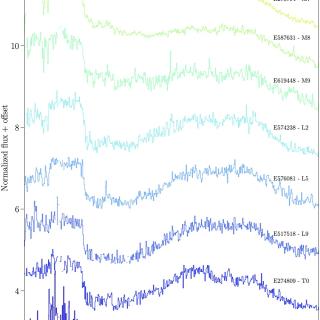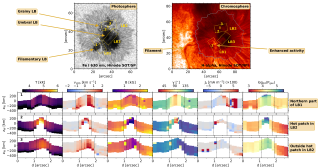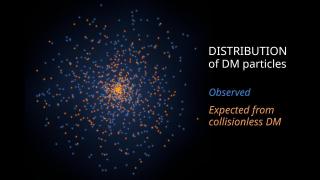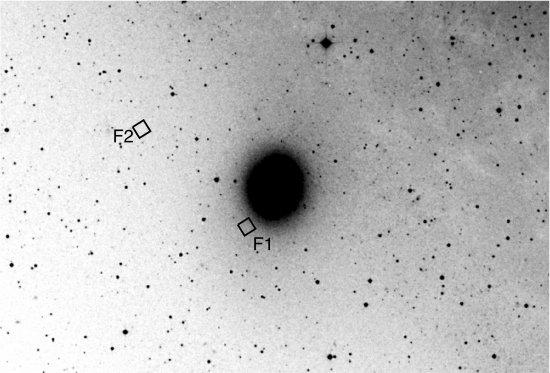We use deep Hubble Space Telescope Advanced Camera for Surveys/High Resolution Channel observations of a field within M32 (F1) and an M31 background field (F2) to determine the star formation history (SFH) of M32 from its resolved stellar population. We find that 2-5 Gyr old stars contribute ~40% ± 17% of M32's mass, while ~55% ± 21% of M32's mass comes from stars older than 5 Gyr. The SFH additionally indicates the presence of young (<2 Gyr old), metal-poor ([M/H] ~ –0.7) stars, suggesting that blue straggler stars contribute ~2% of the mass at F1; the remaining ~3% of the mass is in young metal-rich stars. The inferred SFH of the M31 background field F2 reveals that the majority of its stars are old, with ~95% of its mass already acquired 5-14 Gyr ago. It is composed of two dominant populations; ~30% ± 7.5% of its mass is in a 5-8 Gyr old population, and ~65% ± 9% of the mass is in an 8-14 Gyr old population. Our results suggest that the inner disk and spheroid populations of M31 are indistinguishable from those of the outer disk and spheroid. Assuming the mean age of M31's disk at F2 (~1 disk scale length) to be ~5-9 Gyr, our results agree with an inside-out disk formation scenario for M31's disk.
Advertised on
References
It may interest you
-
 The Near-Infrared Spectrometer and Photometer (NISP) on board the Euclid space mission has obtained near-infrared (NIR) spectra of millions of objects, including hundreds of ultracool dwarfs (UCDs). Euclid observations retrieve images and slitless spectra simultaneously. This observing mode marks a new era in the discovery of new objects, such as L- and T-type dwarfs, which can be found from direct identification through the H2O and CH4 absorption bands. NISP spectral resolution (R ∼ 450) is enough to classify the objects by the spectral type using known standard templates. Q1 provided moreAdvertised on
The Near-Infrared Spectrometer and Photometer (NISP) on board the Euclid space mission has obtained near-infrared (NIR) spectra of millions of objects, including hundreds of ultracool dwarfs (UCDs). Euclid observations retrieve images and slitless spectra simultaneously. This observing mode marks a new era in the discovery of new objects, such as L- and T-type dwarfs, which can be found from direct identification through the H2O and CH4 absorption bands. NISP spectral resolution (R ∼ 450) is enough to classify the objects by the spectral type using known standard templates. Q1 provided moreAdvertised on -
 Light bridges are elongated and bright structures protruding into the umbra of sunspots. The presence of light bridges has a significant role in the evolution of sunspots and the heating of their overlying atmosphere. Therefore, investigating these structures is crucial to understanding fundamental aspects of sunspots. By applying a novel code based on deep-learning algorithms called SICON to spectropolarimetric observations acquired with the Hinode satellite, we computed atmospheric parameters that allowed us to infer the variation of the physical properties of light bridges on a geometricAdvertised on
Light bridges are elongated and bright structures protruding into the umbra of sunspots. The presence of light bridges has a significant role in the evolution of sunspots and the heating of their overlying atmosphere. Therefore, investigating these structures is crucial to understanding fundamental aspects of sunspots. By applying a novel code based on deep-learning algorithms called SICON to spectropolarimetric observations acquired with the Hinode satellite, we computed atmospheric parameters that allowed us to infer the variation of the physical properties of light bridges on a geometricAdvertised on -
 The existence of dark matter is probably one of the fundamental mysteries of modern science and unraveling its nature has become one of the primary goals of modern Physics. Despite representing 85% of all matter in the Universe, we do not know what it is. In its simplest description, it is made up of particles that interact with each other and with ordinary matter only through gravity. However, this description does not correspond to any physical model. Finding out what dark matter is requires finding evidence of some kind of interaction of dark matter that goes beyond gravity. In our workAdvertised on
The existence of dark matter is probably one of the fundamental mysteries of modern science and unraveling its nature has become one of the primary goals of modern Physics. Despite representing 85% of all matter in the Universe, we do not know what it is. In its simplest description, it is made up of particles that interact with each other and with ordinary matter only through gravity. However, this description does not correspond to any physical model. Finding out what dark matter is requires finding evidence of some kind of interaction of dark matter that goes beyond gravity. In our workAdvertised on
